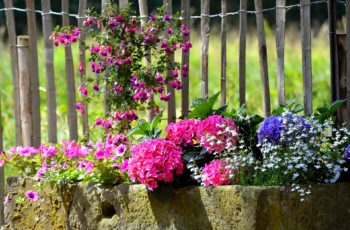What is an Annual Flower?
The annual flowers category is fairly self-explanatory. It takes a year for these plants to undergo a full life cycle. A flower’s life cycle includes the initial seed stage, the floral stage, and then another seed stage, and then death. It only takes a single growing season for all of this to happen for annual flowers.
Given the short life cycle of annual plants, they’re convenient for the people who enjoy constantly updating their gardens and experimenting with a lot of new looks.
People decide to specifically plant annual flowers for a lot of reasons. For one thing, these flowers tend to stay in bloom fairly consistently. It might seem counter-intuitive that this would be the case, given the nature of the annual flower life cycle.
However, these flowers have such a brief life cycle compared with many other plants that they have to keep on producing seeds at a fast rate, maintaining something of an unbroken line in the process.
These flowers will retain their beauty throughout the entire seasons, giving people the chance to enjoy them consistently.
Selecting Stronger Annual Flowers
Some of these flowers are tougher than others. People who live in areas that tend to have unpredictable weather should be careful about which annual plants they choose. Victoria Blue salvia plants fall into that category.
However, many people would still want to pick some of the most popular annual plants, one way or another. Zinnias, petunias, and marigolds tend to be among the most loved of the annual flowers. All of these flowers would be beautiful additions to any garden.
Building Beautiful Annual Flower Planters
Annual flowers also make beautiful planters and hanging baskets. To create your own DIY flower planters this season, combine a variety of thriller, filler and spiller plants.
Thriller plants are vertical plants that add height to your planter as well as greenery such as with bamboo, or large vibrant pops of color, such as with Dahlia or Hibiscus.
Filler plants such as Begonia and Petunias will make up the horizontal and wavey bulk of the planter. Add 1 to 3 of these with complimenting colors.
Plants like Lobelia are spillers that will trail over the side of your planter.
Use a combination of these plant types as well as a variety of complimentary colors to build beautiful flower pots.
Remember to fill out your planters space but to keep in mind how large your annual flowers will become as they grow in order to give them enough space to mature.

